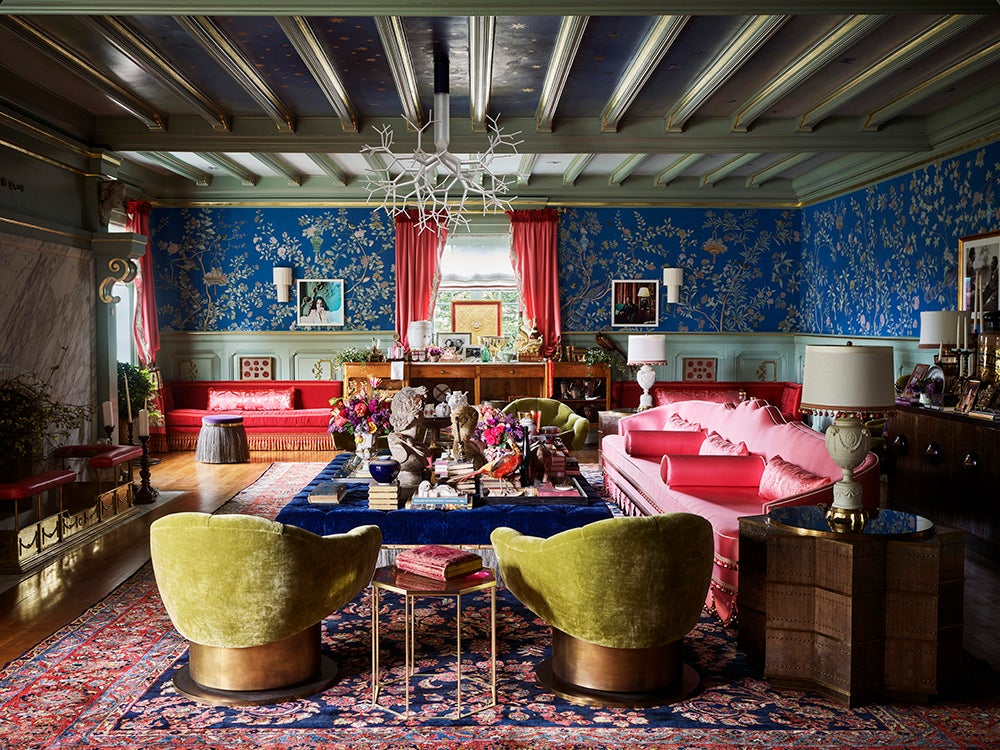Charging for design can be a sticky subject, especially as there is no industry standard on how to do it. We asked nine designers—Michael Del Piero, McCall Dulkys, Lauren Evans, Elizabeth Gill, Roger Higgins, Ruben Marquez, Jonathan Rachman, Gillian Segal and Joseph Tsedaka—what they do when clients question their billing practices.

Reading material
“I provide all my clients with an informational packet that outlines how often and how much I charge. Transparency is crucial for any relationship, and it should be no different in our field. I don’t think you need to divulge all the running secrets of how your business operates or at what percentage your margins are, but telling them a general overview of what they can expect will prevent any miscommunication from occurring down the road. In the past, I have had clients question how I charge, but I have no issue with directing them back to the welcome packet. If they ask anything too personal beyond that, I kindly explain that this is how I run my business, and they are usually respectful of that.” —McCall Dulkys, Interiors by McCall, Stuart, Florida

The golden rule
“I have not had any clients question my billing practices after agreeing to my contract, although I have had a client try to negotiate terms before to signing. I also think that it is important to be very clear when updating your rates. I have increased my rates since opening my business and have provided my clients ample notice prior to billing at the new rate. My advice is to have a very good contract and operate your business in a way that honors your clients without sacrificing profitability. A guiding principle of mine is to treat clients how I would want to be treated.” —Elizabeth Gill, Elizabeth Gill Interiors, New York

one, two, three
“I have been asked by a few clients about how I charge for our services. There is not one standard answer to their typically similar questions. When it comes down to it, they usually only have three different intentions: One, they sincerely want to understand the logic behind our hourly fee structure and markup base. Once they understand the reasons, they are satisfied and move on to the fun stuff and continue to be wonderful clients. Another type of client might ask if we would do a flat rate, which I no longer do for residential projects and explain why it never works out [in my experience]. They either continue to pursue or negotiate, which I will firmly decline. Lastly, there are those who ask to ultimately reduce and negotiate our fee. In this case, I already know they would not be the type of clients we want to work with, and I usually gently decline the project. We don’t negotiate our lawyer’s fee or a surgeon’s rate. I am a strong believer that we must respect our professional fee structure. People who don’t have proven to be unprofessional clients.” —Jonathan Rachman, Jonathan Rachman Design, San Francisco

Meet the minimum
“After being in business for 25-plus years, we find that the clients who question the process before we even get started aren’t generally worth it in the end. We are not interested in only selling furnishings; we are selling a lifestyle and a feeling. We want it to feel right for all involved parties—both financially and environmentally. And, ideally, we want it to be a fulfilling working relationship for everyone involved, whether it’s a project that will take six months or one that could potentially last for years. We have started to require a minimum spend for design time as well as merchandise, and have found it to be an imperative way for us to be properly compensated for the time it takes to successfully procure a well-designed home.” —Roger Higgins, R. Higgins Interiors, Nashville, Tennessee

Words to live by
“Prior to offering a proposal, we always educate the client on why we have to charge what we charge. I often list the procedures and resources it will take for the project, whether it’s for design or product procurement, not to mention our level of experience. Once they hear what the job entails and see how much work is involved, they tend to understand and value your services more. And if they think what you’re charging is too high or unfair, then they are not the kind of client you want to work with. As I always say, if you think it’s expensive to hire a professional, wait until you hire an amateur. —Ruben Marquez, Ruben Marquez Inc., Pasadena, California

Natural process
“I think it is natural for people to be curious about how we structure our fees and time. This is a topic that comes up frequently within the industry, considering each firm and designer chooses to structure their fees differently depending on the client, project goals and hourly rates. When you are first starting out, it can be an uncomfortable topic when you are questioned. However, the biggest piece of advice that I can give to designers starting out is to be confident in your worth. If a client is bargaining on your hourly rates, take it as an indicator of how the rest of the project will likely play out.” —Gillian Segal, Gillian Segal Design Inc., Vancouver

Open book
“We beat them to the punch! Transparency is key from the get-go. Our clients are educated on exactly how and why we charge the way we do, starting with a little blurb in our welcome letter, followed by a more lengthy breakdown in our contract, and again in conversations during initial consultations. It is important that clients understand we are running a professional business, and that means we have a firm, established billing processes and protocol. If we ever experience pushback, we kindly and confidently remind them of our billing methodology.” —Lauren Evans, Lauren Evans Interiors, San Francisco

You get what you pay for
“We have had clients question our fee structure, as many potential clients are interviewing other design professionals who happen to charge differently. When asked, I always assume the questions are primarily to gain an understanding of fees and how we arrived at them. On a few occasions, I have had potential clients comment that the fees seem high relative to the overall product budget. On other occasions, I’ve had potential clients comment that they feel the fees should be a percentage of the overall budget. Regardless, I always take the same approach and explain that when it comes to interior design, you often get what you pay for. We are a highly competent firm and have years of experience to warrant our fees. At the end of the project, we believe that the fees will seem low in comparison to the value gained.” —Michael Del Piero, Michael Del Piero Good Design, Chicago

Cost comparison
“From my experience, this question is hiding a different question: How can I know that I’m getting a fair price? Therefore, we try to approach it with this in mind. We explain the differences between the options available in the market. In the same way a Mercedes-Benz will cost more than a Ford, [some] contractors can charge more or less than others. Additionally, we always try to emphasize the importance of a quality experience with our services, not just an end goal. We really pride ourselves on that and, in the end, clients that understand the process are satisfied.” —Joseph Tsedaka, NÖMI, Dallas-Fort Worth
Homepage photo: A room at the 2019 San Francisco Decorator Showcase by Jonathan Rachman | Courtesy of Jonathan Rachman





























